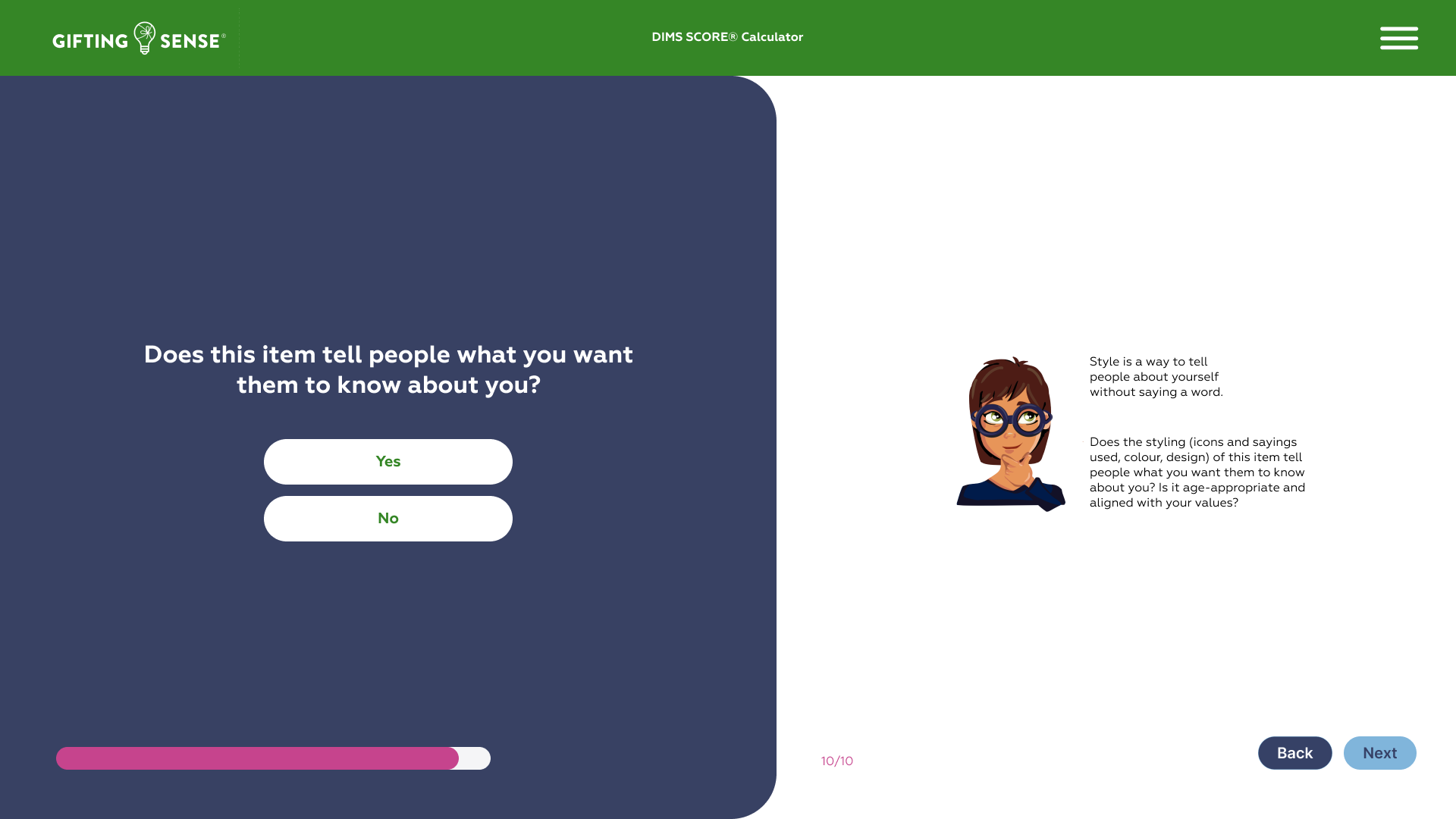People often ask why a DIMS SCORE® question is worded or scored the way it is. We created the DIMS SCORE® blog series to guide you through the thought process that led to the mindful spending tool you see today. This post discusses “the Style Question.”
It’s best to look in the mirror… and see yourself!
You may not know who Iris Apfel is, but if you saw her photo, you might say to yourself, “Oh yes, her.” Iris was fond of saying that the “…worst fashion faux pas is to look in the mirror and not see yourself”. Young people are still developing their personal sense of style when they start shopping and spending “their own” money. Therefore, it can be challenging for them to determine which items or experiences are worth pursuing. This is where thinking before buying can help.
How can you ensure that clothing, equipment, concert, or pro-sport ticket dollars are spent in a way that makes sense for your family? Ask your kids to calculate the DIMS-DOES IT MAKE SENSE?® SCORE for a potential purchase, before they come to you with a request to spend. The last question the DIMS SCORE® Calculator asks is the “Style Question.”
When you look and feel like yourself, life feels more manageable.
The Style Question aims to ensure that young people don’t purchase clothing, accessories, equipment, or tickets that may be inconsistent with their values or priorities.
How do we define “values” in our thinking-before-buying workshops?
We define values as the ideas a young person and their family believe are essential to uphold as they live and work. For example, “In this family, we always pick up litter”, or “We think before we buy!”
Let us say upfront that this question is not about how much an item or experience costs, but rather what it says, in some cases literally. Let us explain.
Some of the mishaps we’ve heard about include…
Parents have told us stories (read nightmares) about their kids being sent home from school to change into more appropriate clothing. We’ve heard about kids being asked to turn a t-shirt inside out at school so that a slogan such as “Your Mom is Hot” is no longer visible. We’ve heard about kids attending dances and not being able to walk in the high-heeled shoes they wore or even dance in the outfit they chose for the event. We often hear about kids playing songs whose lyrics contain almost only expletives. (Although there are as many views on the use of expletives as there are people, most of us find their excessive use discomforting.)
When we put so much effort into raising young people, it’s fair to wonder, “How do these situations occur?” We think it’s partly because today’s youth just aren’t used to slowing down and thinking about all that a purchase telegraphs before they make it. Spending is so frictionless and speedy. However, that tide is turning.
So, let’s encourage kids to take one last pause before making a purchase.
The Style Question was designed to help kids develop the habit of taking one last pause before making a purchase, ensuring, for example, that the icon on a t-shirt represents an idea they genuinely believe in, or that the shoes they want are both flattering and functional. We repeat. The Style Question is not about how much you spend. As the focus on sustainability increases, it may even involve the practices and policies of manufacturers and retailers. For example, does a concert venue employ environmentally friendly waste management practices?
Like it or not, the “Style Question” does a job.
Some have marveled at how we’ve distilled the importance of recognizing that your style can sometimes telegraph a message you had no intention of delivering. Other people really dislike this question. Either way, it often generates the most classroom discussion, which is perfect because reflective moments are crucial when young people are learning about money.
“Does this purchase tell the world what I want it to know about me?” If it doesn’t, it should. The good news? We’ve observed time and again that when kids slow down and assess alternatives before making a consumer decision, they spend in a way that reveals what they want to be known for. In other words, it helps them gain a sense of their style. How can that be a bad thing?
Click on the pink or blue buttons below to learn more about our award-winning mindful spending tool, the DIMS-DOES IT MAKE SENSE? SCORE® Calculator.
DIMS SCORE® Questions For Kids For Parents



